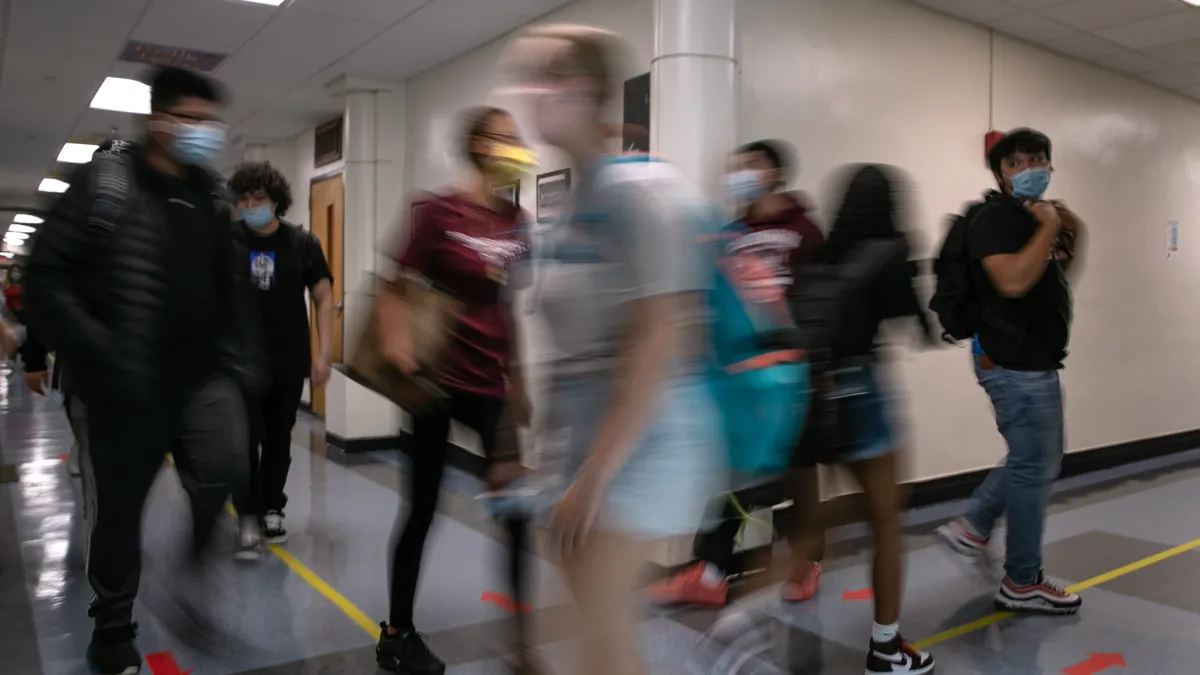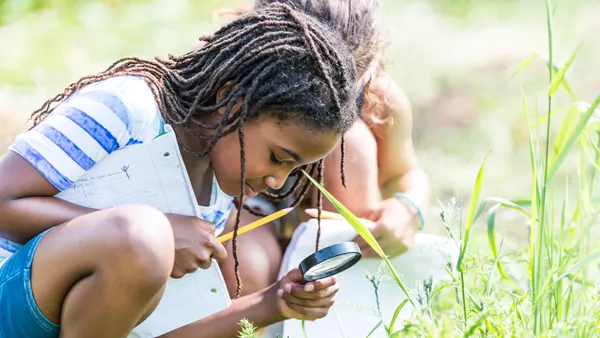Dive Brief:
- As students return to school this fall, many will carry the burden of grief after losing loved ones to COVID-19. In response, some school systems — such as Los Angeles Unified School District in California — are developing grief curricula designed to help students heal, EdSource reports.
- In a March survey by the ACLU of Southern California, 30% of students reported losing a loved one in the last 12 months. Students may seek support from their teachers and the school, which means teachers may need additional help to meet those needs.
- Weekly check-ins are one way to provide grief support, giving students an opportunity to develop their confidence to talk about their feelings of loss.
Dive Insight:
The ACLU of Southern California survey also indicates a need for students' mental health resources. The survey found 66% of students reported their mental health was negatively impacted by the pandemic, 54% experienced a decrease in mental health support over the past year, 51% were overwhelmed by virtual learning, and 57% didn’t have access to a counselor or therapist over the last year.
It also finds students reporting declines in mental wellness. Pre-pandemic, 69% of students said they were a seven or above on a scale of emotional wellness ranging from one to 10, with 10 being the happiest. By April 2020, only 27% said they were a seven or above. The seven-or-above wellness rate returned to 42% by April 2021, but that is still far short of the pre-pandemic level.
While teachers can provide support to students, experts suggest they shouldn’t be expected to be therapists through the transition back to full-time, in-person learning.
The Coalition to Support Grieving Students has a list of resources related to helping students deal with the fallout from COVID-19 and the return to in-person learning, as well as resources to help guide teachers and staff through the process, as many have also experienced the deaths of loved ones due to the pandemic.
Students may experience physical symptoms at school, such as tightness in the chest and numbness. Teachers can help guide students through these feelings by using talking prompts or journaling that help students process their emotions. One-to-one check-ins and using empathy to validate feelings can be helpful for older students.
Some districts are also using portions of their COVID-19 relief funds to strengthen behavioral health supports. For example, Chicago Public Schools will invest $24 million of its federal COVID-19 funds to increase its behavioral support teams from 200 to 500 in-school counselors, case managers and social workers to provide a trauma-informed approach to support and discipline. The funds will provide training for existing staff, rather than hiring additional employees.











